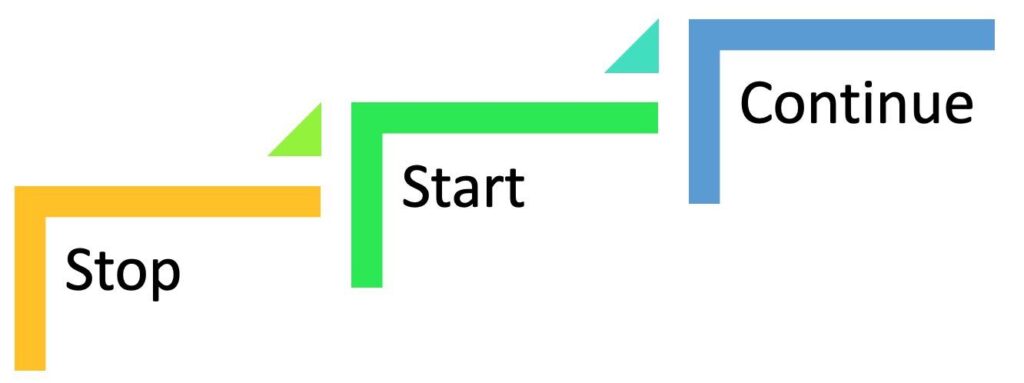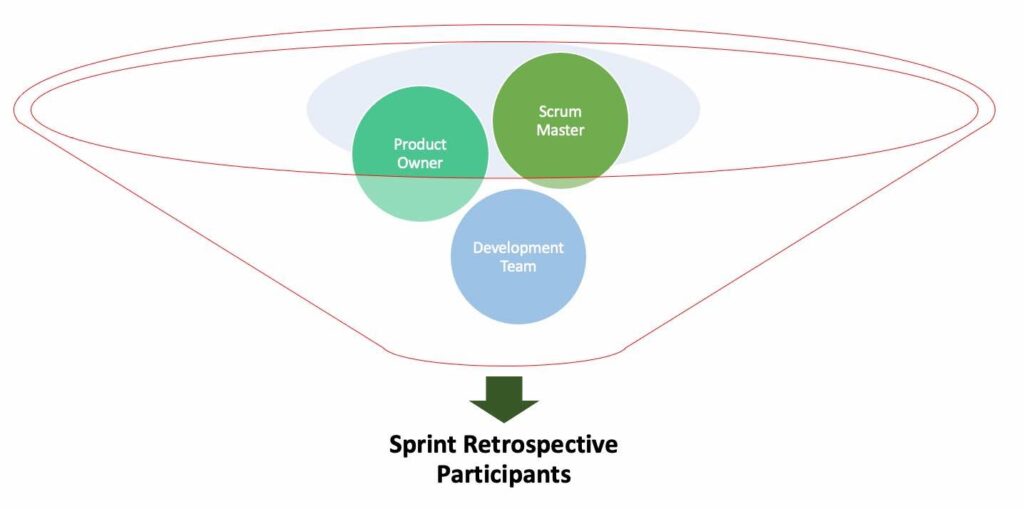Retrospection is the action of reviewing past events and situations for the intent of further improvement. The sprint retrospective is one such scrum ceremonies that is held to identify the scope of further progress and make corrections while moving forward.
In this article, we will be discussing :
- What is a Sprint Retrospective?
- What is the duration of Sprint Retrospective?
- What is the Goal of Sprint Retrospective?
- Who are the participants of Sprint Retrospective?
- What is Scrum Master’s Role in Sprint Retrospective?
- Sprint Retrospective Ideas
- Sprint Retrospective Action Items Examples.
- Sprint Retrospective Template.
What is a Sprint Retrospective? #
The sprint retrospective is the meeting that should occur after every sprint, which provides an opportunity for the team to INSPECT and ADAPT. This meeting helps the team recall from the sprint they worked on what all work they completed, the processes followed, the achievements made, work that could not be completed along with their reasons. All the sprint retrospective meeting participants provide ideas and opinions on refinement and improvement.
No matter how good a Scrum team may be, there is always a scope of improvement, adhering to agile principles. Hence, we should not be skipping this meeting or finding excuses to avoid it as it is an actual event if we want continuous development.
During sprint retrospective meetings, the team should be ready to talk about:
- Assumptions during the sprint they just completed.
- Teams expertise.
- Team interactions.
- Definition of Done.
- Tools.
- Processes.
- Done Done achievements.
- What moved back to the product backlog.

What is the duration of Sprint Retrospective? #
The sprint retrospective duration should be no more than 3 hours for a 1-month sprint and less than 3 hours for shorter sprints.
We can follow the below pattern:

What is the Goal of Sprint Retrospective? #
The goal of the sprint retrospective meeting is to refine the scrum team by looking into:
- What went well.
- What the team needs to improve.
- What the team can do best for the upcoming sprints.
Also, by the end of this meeting team should have identified the required and clear improvement actions, which the team can start taking as soon as possible.
Who are the participants of Sprint Retrospective? #
The sprint retrospective team participants are:
- The development team.
- The product owner.
- The scrum master.
Only the scrum team can hit all of the significant points to solicit the best possible action.

What is Scrum Master’s Role in Sprint Retrospective? #
Scrum Master should strive to help good scrum teams become great.
In retrospective meetings, the scrum master should mostly be a facilitator. The scrum master should be responsible for ensuring that the sprint retrospective meetings happen after each sprint. The scrum master can send invites, collect the actions, and spread them to the team.
The scrum master should not be forcing things like processes on the team as it is the team who best knows how the work needs to be done. Scrum master is an active team member whose responsibility is to check if the scrum rules have been understood, applied, and optimized.
To break the ice, the scrum master can start the meeting with his/her ideas, and anyone can follow, but this is just one way of doing things teams should take the call as they feel comfortable. The scrum master can provide from his perspective what went well and what didn’t go well.
Scrum Master can and also initiate some innovative ways for the sprint retrospective meetings to not get bored over time. The scrum master should ensure that things are not going too casually, and the points made are well noted for actions to be taken in the future also, that the meeting stays on track and is productive.
The scrum master takes care that before starting a new sprint retrospective meeting team looks at what was discussed in the last meeting and if appropriate actions initiated.
Pro tip: Scrum Master is the one who is not forcing processes; instead should be driving process improvements.
Sprint Retrospective Ideas #
At times, sprint retrospective meetings can become monotonous; hence, the team can try to add some spice into these meetings for fun.
Here are a few things teams can do:
- Do not always have sprint retrospections in meeting rooms: Teams can choose a pantry area or any other outdoor place to discuss and make the mood lighter.
- Start the retrospective meetings with a small game: This is one of the methods many teams adopt to give a fun start to retrospective meetings. Allot some time, maybe 15 minutes, to have a round of any team building activity followed by sprint retrospection.
- Try different tools for sprint retrospection. Many tools are available over the internet to be used by the teams for sprint retrospection like goReflect , TeamMoods, TeamRetro etc. In case the team is looking for some free alternatives, they can use GoRetro, Metro Retro, etc.
- Rotate your Scrum Retrospective Meeting Facilitator: taking rotations to facilitate the sprint retrospective meeting gives a different flavour to the retrospective. Everyone has their way of moderating things. The cycling of moderator helps the team to take up more responsibilities and feel empowered.
Sprint Retrospective Action Items Examples: #
One of the flaws in the sprint retrospective meetings is the lack of clearly derived actions from these meetings and accountability. Therefore, to ensure that a proper action list is maintained, we can follow the below pattern:

Though every team has specific action items to be taken depending on their environment, this section gives some ideas to help understand what action items can be, including technical improvements, process improvements, innovative ideas, etc. Few examples are:
- Add the missing unit test case to the specific part of the code.
- A formal review checklist should be prepared and followed for code reviews.
- While documenting the sprint deliverables, mention the file names in BOLD.
- While doing the estimation of web-services for module-‘A’ , we should consider the number of inputs it takes.
Sprint Retrospective Template ppt #

Though underestimated by many teams, Sprint Retrospection is essential for the scrum team’s growth and progress in an agile environment. Good Luck with your next upcoming sprint retrospective meeting !!.